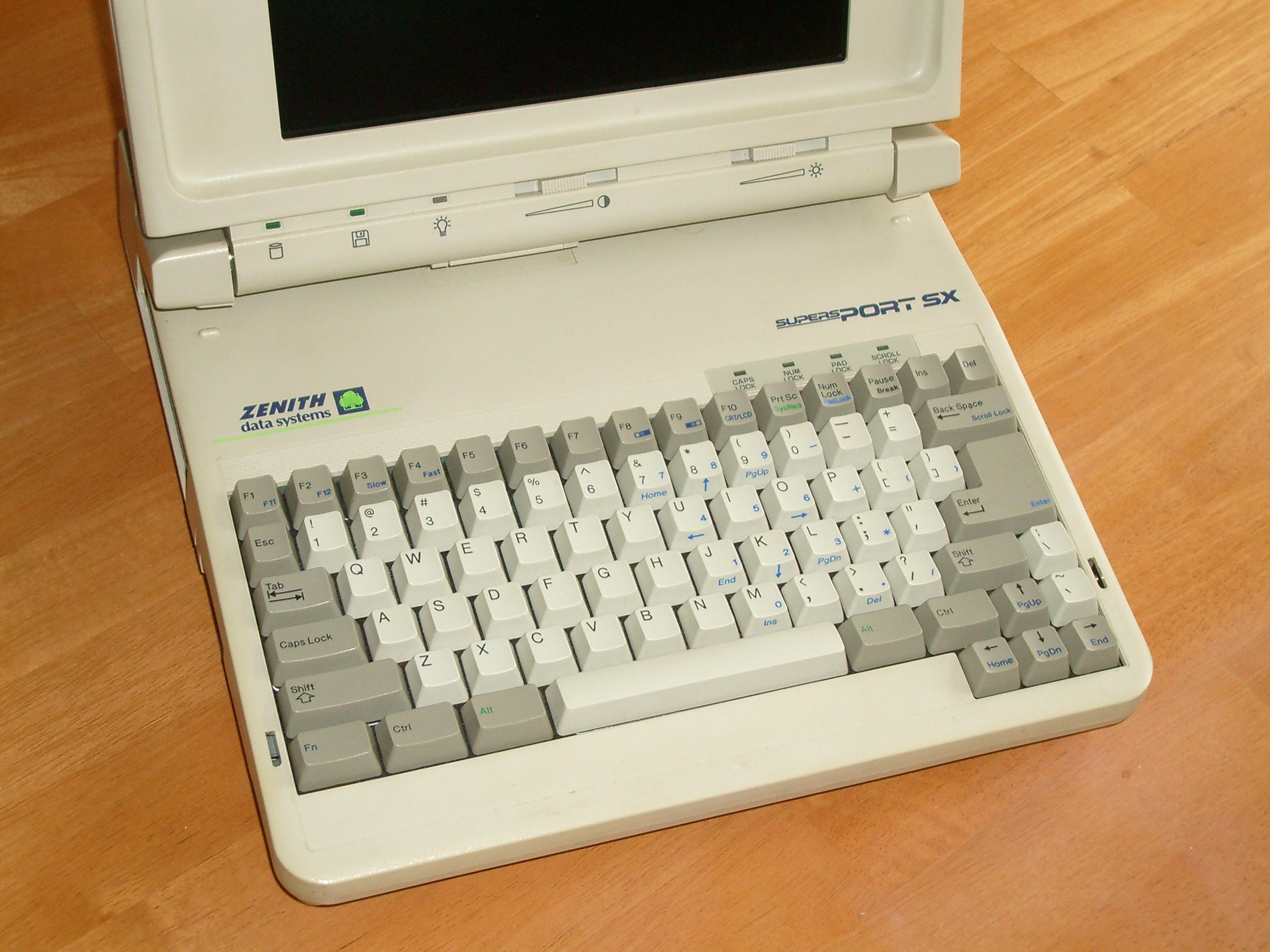|
Zenith SupersPort
The SupersPort is a line of PC-compatible laptops manufactured by Zenith Data Systems and sold from 1988 to 1993. The first two main entries in the SupersPort line included either an Intel 80286 microprocessor clocked at 12 MHz or an 8088 processor clocked at 8 or 4.77 MHz, switchable. Later entries included the 386SX, 486SX and 486 processors. The SupersPort 286 in particular was one of the top-selling laptops of the late 1980s, although Zenith's position in this segment faltered by the early 1990s. Development and release Zenith Data Systems unveiled the SupersPort line alongside Zenith's TurbosPort 386 luggable computer on April 19, 1988. Both the SupersPort and TurbosPort were marketed under the company's new Road Warrior umbrella of battery-powered portable computers, a project helmed by Andy Czernek and John Frank, VP of marketing and president of Zenith respectively. Meanwhile, Howard Fullmer and Russ Niedzielski were responsible for the SupersPort's design. ... [...More Info...] [...Related Items...] OR: [Wikipedia] [Google] [Baidu] |
Zenith Data Systems
Zenith Data Systems (ZDS) was a division of Zenith Electronics founded in 1979 after Zenith acquired the Heath Company, which had entered the personal computer market in 1977. Headquartered in Benton Harbor, Michigan, Zenith sold personal computers under both the Heath/Zenith and Zenith Data Systems names. Overview Zenith was an early partner with Microsoft, licensing all Microsoft languages for the Heath/Zenith 8-bit computers. Conversely, Microsoft programmers of the early 1980s did much of their work using Zenith Z-19 and Z-29 CRT display terminals hooked to central mainframe computers. The first Heathkit H8 computer, sold in kit form, was built on an Intel 8080 processor. It ran K7 audio-tape software, punched tape software (with puncher/reader H10) and HDOS (Heath Disk Operating System) software on 5¼" hard-sectored floppy disks. The CP/M operating system was adapted to all Heath/Zenith computers, in 1979. Next, the early Heath/Zenith computers (H88/ H89 and Z-89) were b ... [...More Info...] [...Related Items...] OR: [Wikipedia] [Google] [Baidu] |
Zenith TurbosPort
The zenith (, ) is an imaginary point directly "above" a particular location, on the celestial sphere. "Above" means in the vertical direction (plumb line) opposite to the gravity direction at that location (nadir). The zenith is the "highest" point on the celestial sphere. Origin The word "zenith" derives from an inaccurate reading of the Arabic expression (), meaning "direction of the head" or "path above the head", by Medieval Latin scribes in the Middle Ages (during the 14th century), possibly through Old Spanish. It was reduced to "samt" ("direction") and miswritten as "senit"/"cenit", the "m" being misread as "ni". Through the Old French "cenith", "zenith" first appeared in the 17th century. Relevance and use The term ''zenith'' sometimes means the highest point, way, or level reached by a celestial body on its daily apparent path around a given point of observation. This sense of the word is often used to describe the position of the Sun ("The sun reached its zenith ... [...More Info...] [...Related Items...] OR: [Wikipedia] [Google] [Baidu] |
IBM Personal Computer
The IBM Personal Computer (model 5150, commonly known as the IBM PC) is the first microcomputer released in the IBM PC model line and the basis for the IBM PC compatible de facto standard. Released on August 12, 1981, it was created by a team of engineers and designers directed by Don Estridge in Boca Raton, Florida. The machine was based on open architecture and third-party peripherals. Over time, expansion cards and software technology increased to support it. The PC had a influence of the IBM PC on the personal computer market, substantial influence on the personal computer market. The specifications of the IBM PC became one of the most popular computer design standards in the world. The only significant competition it faced from a non-compatible platform throughout the 1980s was from the Apple Macintosh product line. The majority of modern personal computers are distant descendants of the IBM PC. History Prior to the 1980s, IBM had largely been known as a provider of ... [...More Info...] [...Related Items...] OR: [Wikipedia] [Google] [Baidu] |


